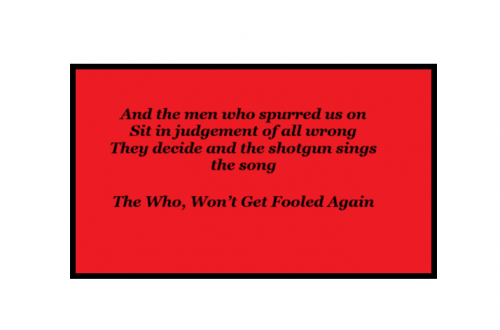In today’s Times Rose Wild has a ‘feedback’ column (£) in which she offers a fairly light-hearted survey of readers’ correspondence. The first issue she discusses is correspondence prompted by a cartoon by Morten Morland which appeared on Monday. Wild notes that Morland was ‘surprised and distressed’ by the fact many people wrote in to say they were offended by this image. She reports one reader claiming it echoed Nazi caricatures of Jews from the 1930s and another describing it as ‘gratuitously and shockingly insulting … could not have been done better by Dr Goebbels.”
Clearly antisemitic tropes are a bit of a minefield. It is surely quite possible to slip into one accidentally. I find it hard to believe that Morland intended to produce an image which could be construed as antisemitic. Looking at his other work I see that he tends to draw people with exaggerated features. So – the cartoon’s apparent stereotyping could be an unfortunate coincidence. Alternatively, Morland may have been exposed to antisemitic images of financiers at some point and unconsciously been influenced by them.
What is of more concern (I think) is the way the readers’ points are brushed aside. Wild assures us no offence was intended. I’m sure she’s right. But then she goes on to ask:
But how careful should a cartoonist be? I asked Roger Boyes, our diplomatic editor who, as The Times’s Berlin correspondent, has written for many years about the legacy of Nazism.
“Der Stürmer ceased to exist in 1945. So did Hitler,” he replied. “Why should a Nazi propaganda magazine still be regarded as a criterion for judging a modern cartoon?”
That seems extraordinarily odd logic – and a kind of licence to reproduce any antisemitic (or other offensive) stereotype. Roger Boyes is then quoted as saying:
“Is a hooked nose a Jewish trait? That is what the Nazis wanted Germans to believe, and this assessment seems to have been taken over by some of the aggrieved readers. It is, of course, nonsense and today’s cartoonists shouldn’t be held captive by a long-defunct Nazi organ.”
Again – this doesn’t seem a convincing line of argument, and indeed the whole piece seemed rather odd and defensive. There is no need to accuse the cartoonist of conscious or even unconscious antisemitism in order to understand why people might have been offended. The readers’ concerns are further trivialised by the small cartoon which accompanies Rose Wild’s piece – it depicts a cat writing a letter with the caption ‘Sir, the use of “fat cat” to mean “greedy banker” is gratuitously offensive …’. This seems a strange way of dealing with readers concerns about even inadvertent racism. Why didn’t The Times simply print one of the letters, to reflect the fact several readers made the same point? The title of the article – ‘Dangers of drawing the wrong conclusion’ also implies that the readers are simply wrong. Although the potentially punning word ‘drawing’ might at first seem to implicate the cartoonist, the overall message targets the supposedly over-sensitive readers.


